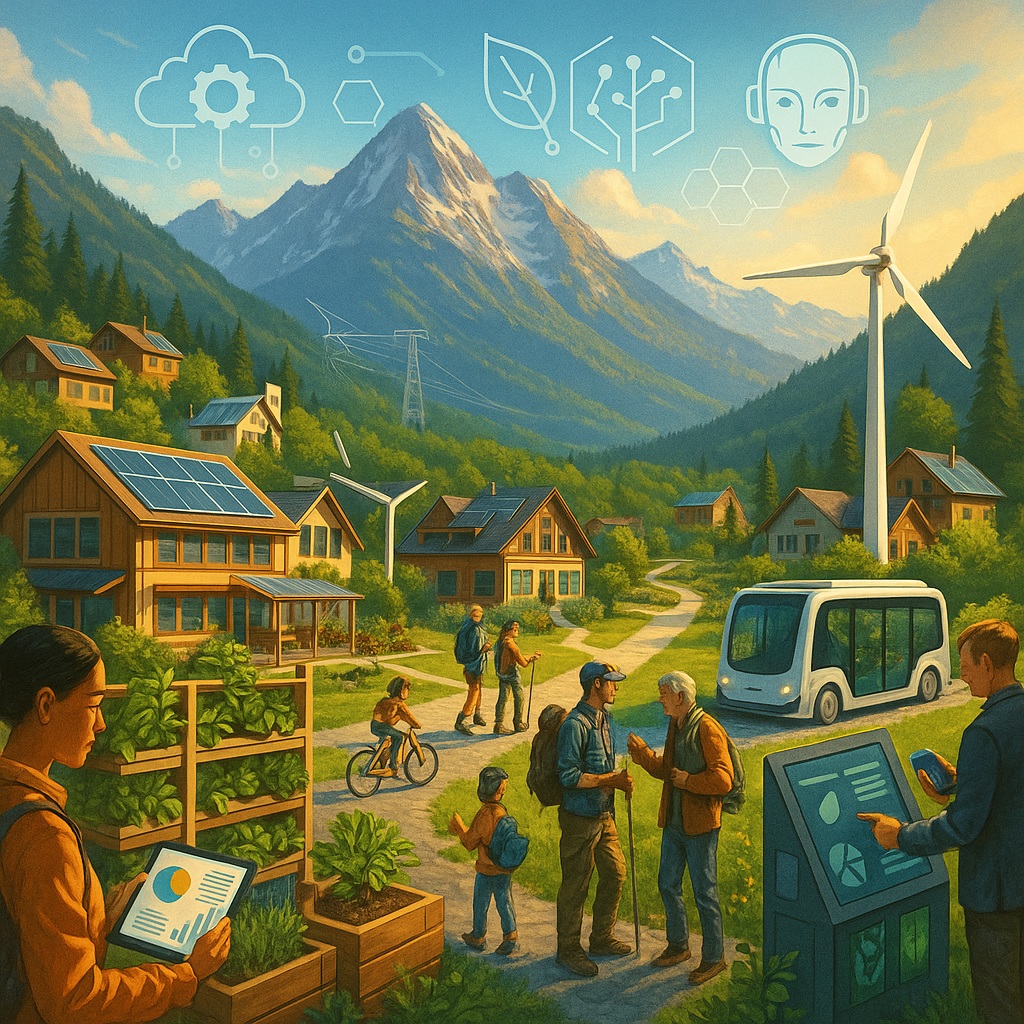For decades, rural Canada and mountain communities around the world have been shaped by extractive industries—timber, mining, oil, and gas. Legislation designed in another era gave these industries priority over community values, often at the expense of long-term wellbeing.
Meanwhile, tourism has quietly grown into a larger contributor than many traditional resource sectors. And yet, it’s still treated as an “add-on” instead of a driver of regeneration.
It’s time to flip that script.
Tourism as a Regenerative Leader
Tourism already connects visitors and locals more than any other sector. Every day, our mountain communities host exchanges of ideas, wealth, and energy. That engagement is a superpower—if we choose to use it, not just for marketing, but for reinvestment.
Imagine if a portion of tourism proceeds were directed beyond trails and parks into the real costs of living:
- Housing innovation that makes homes affordable again
- Food tech and local agriculture that build resilience
- Decentralized energy to cut household bills and carbon footprints
- Shared mobility that reduces car dependence and isolation
These are the biggest costs in our lives—many inflated by tourism itself—and the very areas where reinvestment can transform communities from fragile to thriving.
Living Labs for the World
Mountain towns are perfectly positioned to become living labs of regeneration. They already attract global visitors and wealth—now they can attract global solutions.
From Revelstoke, Whistler Blackcomb, and Mont Sutton in Canada, to Aspen, Jackson Hole, and Lake Tahoe in the U.S.; from Chamonix, Verbier, and Innsbruck in Europe, to Bariloche, Valle Nevado, and Portillo in South America; from Niseko, Ladakh, and Gulmarg in Asia; and The Remarkables, Coronet Peak, and Treble Cone & Cardrona in New Zealand—these iconic destinations are not just world-class ski areas, but potential eco-laboratories.
If they embrace housing innovation, food tech, decentralized energy, shared mobility, and nature-based infrastructure, these mega-resorts could become blueprints for how rural and mountain communities everywhere reinvent themselves.
One example: Zincton Mountain Village in British Columbia. Designed as an open-source regenerative project, Zincton is showing what it looks like when a mountain destination reinvests in housing, energy, food, and ecological stewardship while opening its process to community collaboration.

A Roadmap for Change
1️⃣ Tourism as civic engagement
Tourism is the best engagement mechanism—visitors and locals interact daily. Use that to set community priorities, test proof-of-concept projects, and unlock new revenue in housing, food, mobility, and energy.
2️⃣ Community-driven platforms
Certified civic tech platforms make it easy to co-create priorities and vote in real time. Community voting can influence government faster than traditional lobbying—or bypass bureaucracy entirely by building legitimacy from the ground up.
3️⃣ Co-ownership funds
Create public/private/community funds where locals, entrepreneurs, and investors co-own projects. Tourism profits can flow into housing, food systems, energy grids, and mobility services. This doesn’t have to wait for government—it can start privately and grow.
4️⃣ Tech ≠ Extraction 💚 Tech = Regeneration
For too long, technology has been used to extract. Now it can regenerate:
- AI to map ecosystems, educate us, and co-design regenerative villages.
- Sensors to balance water, soil, and energy use in harmony with nature.
- Platforms to democratize decision-making and funding.
5️⃣ AI + Humanoids = Radical New Economics
The future of infrastructure is about to change. AI and humanoid robotics will slash the cost of building homes, food systems, energy networks, and shared mobility. What once took millions in labor and decades of planning can be co-created locally—by people and machines working together.
6️⃣ Reinvest in cost-of-living + holistic health
Tourism has inflated housing, food, energy, and mobility costs. Redirecting proceeds here makes communities thrive. Trails and recreation are just the beginning—true wellness comes from integrating outdoor health with affordable housing, food security, clean energy, and accessible transport.
The Moment to Lead
🌱 Nature doesn’t run on money. It runs on data, energy, and reciprocity. Tourism has the reach, the connection to nature, and the civic power to lead this shift.
If mountain communities step into this role, they can bridge the urban–rural divide and lead the world toward regeneration.
Trails are the spark. Regeneration is the fire.

